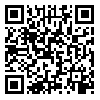Volume 5, Issue 2 (June 2023)
IEEPJ 2023, 5(2): 320-331 |
Back to browse issues page
Download citation:
BibTeX | RIS | EndNote | Medlars | ProCite | Reference Manager | RefWorks
Send citation to:



BibTeX | RIS | EndNote | Medlars | ProCite | Reference Manager | RefWorks
Send citation to:
Heydari Amin F, Hashemiannejad F, Sadat Naseri N. (2023). Identification of Organizational Excellence Dimensions with an Organizational Agility Approach in the Department of Education of Sistan and Baluchestan Province. IEEPJ. 5(2), 320-331. doi:10.61186/ieepj.5.2.320
URL: http://ieepj.hormozgan.ac.ir/article-1-789-en.html
URL: http://ieepj.hormozgan.ac.ir/article-1-789-en.html
1- PhD student in Educational Management, Department of Educational Sciences, Mashhad Branch, Islamic Azad University, Mashhad, Iran
2- Assistant Professor of Educational Planning, Department of Educational Sciences, Mashhad Branch, Islamic Azad University, Mashhad, Iran , Hash@mshdiau.ac.ir
3- Assistant Professor of Educational Planning, Department of Educational Sciences, Mashhad Branch, Islamic Azad University, Mashhad, Iran
2- Assistant Professor of Educational Planning, Department of Educational Sciences, Mashhad Branch, Islamic Azad University, Mashhad, Iran , Hash@mshdiau.ac.ir
3- Assistant Professor of Educational Planning, Department of Educational Sciences, Mashhad Branch, Islamic Azad University, Mashhad, Iran
Abstract: (430 Views)
The aim of this research was to identify the dimensions and components of organizational excellence with an organizational agility approach in the Department of Education of Sistan and Baluchestan Province. This qualitative study included individuals with university education, experts, opinion leaders, professors, and experts from the scientific community, who were purposefully selected (25 individuals) as the research population. Descriptive and inferential methods, as well as the Delphi method, were used for data analysis. The research results revealed that the organizational excellence variable consists of four dimensions (professional excellence, organizational excellence, individual excellence, and educational excellence) and 14 components. Furthermore, the organizational agility model in the Department of Education of Sistan and Baluchestan Province indicated that organizational agility comprises four dimensions (responsiveness, flexibility, change, and performance management) and 12 components. As a result, managers and officials, by incorporating human resource development strategies into organizational strategies, creating a shared vision, fostering intellectual synergy, and embracing new ideas, can promote organizational excellence among members of the organization and take steps toward organizational agility.
Type of Study: Original |
Subject:
Educational Psychology
Received: 2023/01/8 | Accepted: 2023/04/25 | Published: 2023/06/1
Received: 2023/01/8 | Accepted: 2023/04/25 | Published: 2023/06/1
References
1. Bakhtiari, M., Abbasi, L., Kurdestani, F., & Khorshidi, A. (2019). Presentation of the model of growth of faculty members of Islamic Azad University, Central Tehran branch. Educational Leadership and Management Quarterly, 14(4), 1-21.
2. Bashir, A., & Hussan, S. (2020). A Teachers' Perceptions about Continuous Professional Development at Secondary Level: A qualitative Study. Kashmir Journal of Education, 2(I), 1-19.
3. Brosseau, D., Ebrahim, S., Handscomb, C., & Thaker, S. (2019). The journey to an agile organization. McKinsey & Company, May, 10, 14-27.
4. Cardno, E. J. (2000). Managing the 'fit 'of information and communication technology in community health: A framework for decision making. Journal of Telemedicine and Telecare, 6(2_suppl), 6-8. [DOI:10.1258/1357633001935644]
5. Chetty, V. (1998). Stochastic technology, production organization and costs. Journal of Health Economics, 17(2), 187-210. [DOI:10.1016/S0167-6296(97)00017-9]
6. Darvishmotevali, M., Altinay, L., & Köseoglu, M. A. (2020). The link between environmental uncertainty, organizational agility, and organizational creativity in the hotel industry. International journal of hospitality management, 87, 102499. [DOI:10.1016/j.ijhm.2020.102499]
7. Felipe, C. M., Roldán, J. L., & Leal-Rodríguez, A. L. (2017). Impact of organizational culture values on organizational agility. Sustainability, 9(12), 2354. [DOI:10.3390/su9122354]
8. Goldman, S. L., & Nagel, R. N. (1993). Management, technology and agility: the emergence of a new era in manufacturing. International Journal of Technology Management, 8(1-2), 18-38.
9. Haneberg, D. H. (2019). Entrepreneurial learning as an effectual process. The Learning Organization, 26(6), 631-647. [DOI:10.1108/TLO-04-2018-0064]
10. Harraf, A., Wanasika, I., Tate, K., & Talbott, K. (2015). Organizational agility. Journal of Applied Business Research (JABR), 31(2), 675-686. [DOI:10.19030/jabr.v31i2.9160]
11. hejazi, a. (2020). Determining the components of professional development of faculty members of Farhangian University. Research in Teacher Education(RTE), 3(1), 41-61. https://te-research.cfu.ac.ir/article_1187_1b7ced0735e01c384c704ffcebb9616d.pdf
12. Henderson, G. M. (2002). Transformative learning as a condition for transformational change in organizations. Human Resource Development Review, 1(2), 186-214. [DOI:10.1177/15384302001002004]
13. Kazemi Kia, H., Ahmadi, A., & Ahghar, Q. (2018). Model design and validation of organizational growth. Educational Leadership & administration, 12(3), 225-241. https://edu.garmsar.iau.ir/article_545818_0fb236cb9d9a93c1b900e77d6b7b35bf.pdf
14. Kuipers, B. S., Higgs, M., Kickert, W., Tummers, L., Grandia, J., & Van der Voet, J. (2014). The management of change in public organizations: A literature review. Public administration, 92(1), 1-20. [DOI:10.1111/padm.12040]
15. Lee, J., Lim, C., & Kim, H. (2017). Development of an instructional design model for flipped learning in higher education. Educational Technology Research and Development, 65, 427-453. [DOI:10.1007/s11423-016-9502-1]
16. Lukman, H. (2017). Interactions between Personal Characteristics and Audit Behavior: A Moderating Role of Organizational Commitment. Journal of Economic & Management Perspectives, 11(3), 337-345.
17. Nafei, W. A. (2016). Organizational agility: The key to organizational success. International Journal of Business and Management, 11(5), 296-309. [DOI:10.5539/ijbm.v11n5p296]
18. Rezaei, M., Rezaei, V., & Rezaei, S. (2014). Knowledge management and agility strategies in the publishing industry. Ketab e Mehr, 5(16), 38-53.
19. Singh, J., Sharma, G., Hill, J., & Schnackenberg, A. (2013). Organizational agility: What it is, what it is not, and why it matters. Academy of management proceedings, [DOI:10.5465/ambpp.2013.11813abstract]
20. Turner, T. L., Zenni, E. A., Balmer, D. F., & Lane, J. L. (2021). How full is your tank? A qualitative exploration of faculty volunteerism in a national professional development program. Academic Pediatrics, 21(1), 170-177. [DOI:10.1016/j.acap.2020.06.140]
21. Widayati, A., MacCallum, J., & Woods-McConney, A. (2021). Teachers' perceptions of continuing professional development: a study of vocational high school teachers in Indonesia. Teacher Development, 25(5), 604-621. [DOI:10.1080/13664530.2021.1933159]
Send email to the article author
| Rights and permissions | |
 |
This work is licensed under a Creative Commons Attribution-NonCommercial 4.0 International License. |









